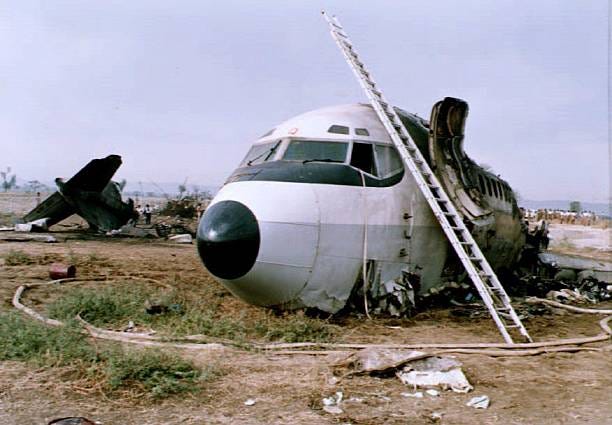Ahmedabad – A tragic incident unfolded near Ahmedabad airport on Thursday afternoon when Air India’s London-bound Flight AI 171, operated by a Boeing 787-8 Dreamliner (VT-ANB), crashed just moments after takeoff. The flight was carrying 242 people—230 passengers and 12 crew members—when it went down in a densely populated area, colliding with a medical college hostel mess building. Casualties are feared, and rescue efforts are ongoing.
Visuals from the crash site showed thick plumes of grey smoke billowing from the debris as emergency personnel, including two dozen ambulances, rushed to the scene. Several injured individuals have been taken to nearby hospitals. Reports suggest that medical students housed in the building may be among the victims.
Air India issued a statement confirming the crash:

“Flight AI171, from Ahmedabad to London Gatwick, was involved in an accident today after take-off. The aircraft departed at 13:38 hrs IST and was carrying 242 passengers and crew, including 169 Indian nationals, 53 British, 7 Portuguese, and 1 Canadian.”
Possible Causes: What Went Wrong?
While the exact cause of the crash will only be confirmed after data from the aircraft’s black box is retrieved and analysed, aviation experts have begun sharing initial assessments.

According to civil aviation analyst J.P. Singh, no external damage or engine smoke was visible during takeoff based on preliminary visuals. He clarified that the fire and smoke seen later were post-impact, not during flight.
Experts are exploring the possibility of:
-
Engine failure, likely due to a sudden loss of thrust,

-
Loss of lift, or
-
Bird strike, which may have compromised engine performance.
The aircraft reportedly plunged from an altitude of 624 feet, just moments after becoming airborne. The landing gear was still extended, suggesting the aircraft was in its initial climb when trouble struck. A “MAYDAY” distress call was sent by the pilot shortly before the crash, indicating a critical in-flight emergency with no time or altitude to return safely.
Another concerning factor is the fuel load. Since the plane was bound for London, it likely carried over 100 tons of Aviation Turbine Fuel, which intensified the explosion on impact.
The DGCA, along with Boeing and Air India investigators, is examining flight data, cockpit recordings, and eyewitness reports to determine the definitive cause of the crash.
As India mourns yet another aviation tragedy, questions are now being raised about aircraft maintenance, bird control measures near airports, and pilot response protocols. A full investigation is underway.





